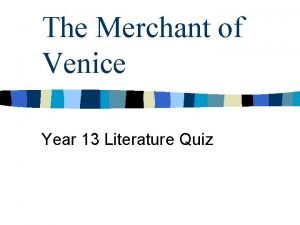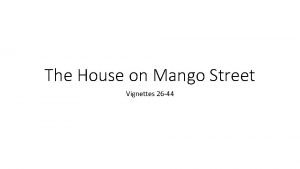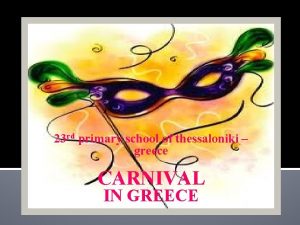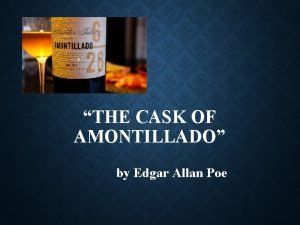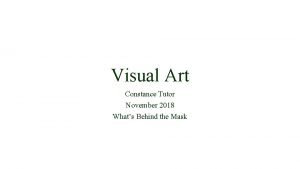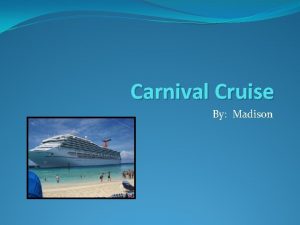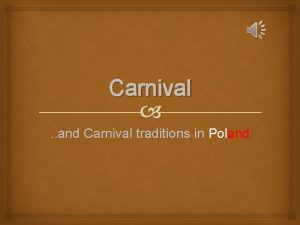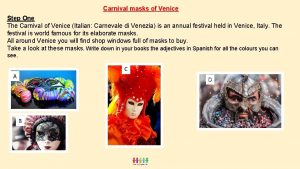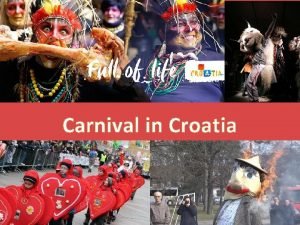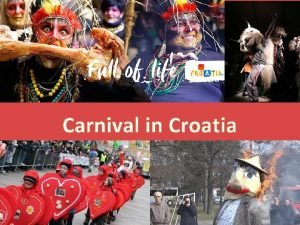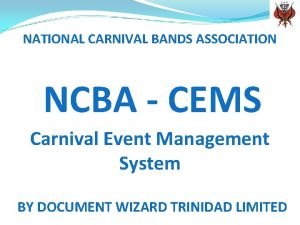THE CARNIVAL OF VENICE The Carnival of Venice









- Slides: 9

THE CARNIVAL OF VENICE

The Carnival of Venice is one of the most ancient and charming venetian feasts. Rooted in the history and tradition of Venice, the Carnival is the most famous feast of Venice and it's considered by venetians and its hundreds of thousands of guests as an event not to be missed!

During the ten days of Carnival leading up to Mardi Gras, Venice is a hive of activity and entertainment, from improvised street entertainment to performances put on by the organisers.

Saint Mark's Square remains the heart of Carnival, with its huge stage, although other events take place throughout the city, helping to avoid an excessive build-up of people in pedestrianised Venice.

The use of masks

Masks have always been a central feature of the Venetian carnival; traditionally people were allowed to wear them between the festival of Santo Stefano (St. Stephen's Day, December 26) at the start of the carnival season and midnight of Shrove Tuesday.

Venetians were famous for being libertines and for transgression - they didn't use masks just during the official Carnival. Putting on a mask in Venice meant taking forbidden liberties: you could jibe at the powerful, gamble without being caught, take risks over love or business deals and even enter convents without being seen. A numbers of restrictive laws passed on dressing up prove how widespread the habit was. The Carnival itself, meant letting-go and abandoning oneself to play; freedom, transgression and good -willed madness. Palaces opened their courtyards to celebrations and there was music and dancing all day and all night in the alleyways, small squares and even on the water. Venice was alive with sound and colour.

The most widely used mask, for which Venetians would spend absolute fortunes, was the 'bauta': it was an ample full-cut black mantle which dropped over the shoulders down to the waist. On their heads they wore the typical black, three-cornered hat (the tricorno), and on their faces a white mask called 'larva', with a widened, protruding lip that altered their voices. The bauta was used by both men and women who wore it in black in winter and white in summer.

THE END!!
